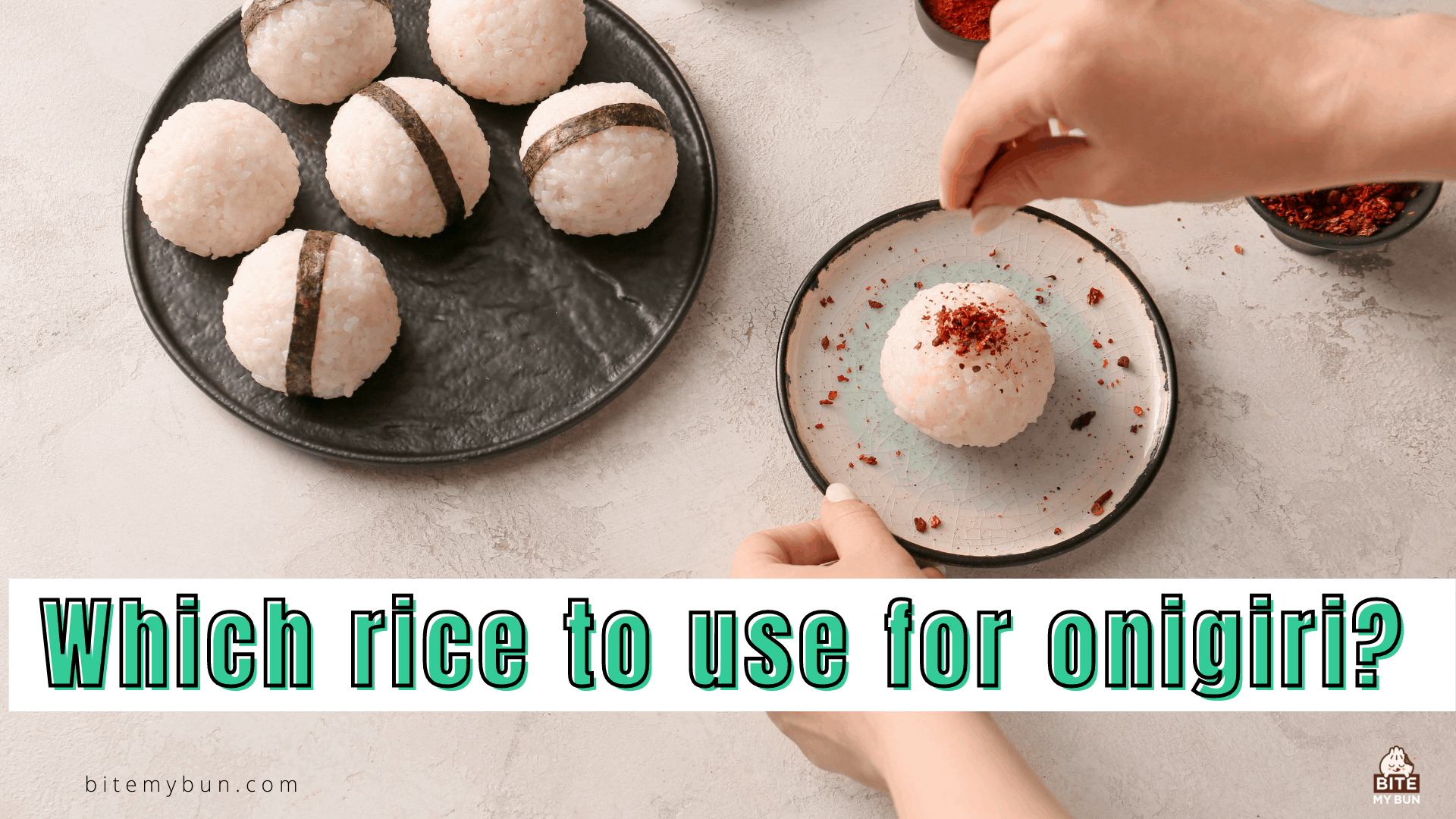Which rice to use for onigiri? The secret to authentic rice balls
Onigiri is quite a famous go-to snack because you can so easily take it with you. But, what if you want to make your own rice ball, what kind of rice would you need?
The best rice for onigiri is the short-grained Japonica variant or “Koshihikari,” known for its fluffy and stickier texture with shiny exterior. Good onigiri rice absorbs the right amount of water, helping the rice and the filling stick together.
In this article, I’ll show you exactly what to get so you won’t end up with mushy balls that want to fall apart out of misery.


Check out our new cookbook
Bitemybun's family recipes with complete meal planner and recipe guide.
Try it out for free with Kindle Unlimited:
Read for freeIn this post we'll cover:
Koshihikari: the secret to good onigiri
Japonica rice or koshihikari is currently the most cultivated variant of rice in Japan. Hence, this is one of the main reasons Japanese locals use it for their rice balls.
The only countries that cultivate this type of rice are Japan, Australia, and some parts of the United States.
Like other short-grained rice, the Koshihikari is known for its texture and appearance. It has a very sticky texture, which is quite essential if you want your onigiri to have a shape like triangles or cylinders, and not fall apart.
Koshihikari rice absorbs the best amount of moisture to keep the rice in a firm shape.
Other types of rice, such as jasmine rice and basmati rice, are also fluffy. But because these are long-grain rice, they tend to be drier and cannot retain enough moisture to keep onigiri’s shape.
You can still use other rice variants, but it might not have a great shape and texture as a genuine onigiri.
Take note: even if you use authentic Japanese rice, you might encounter some problems cooking it for onigiri for the first time.
The Koshihikari is cooked differently, unlike other rice variants. If you want your onigiri to be shiny, fluffy, and sticky enough, you need to follow the Japanese way of cooking rice.
How do you cook Japanese rice properly?
Cooking Japanese rice is quite easy, you can also use a rice cooker to save time and effort.
Japan Centre recommends using 390ml water for every 300g of Japanese rice.
- Wash the rice by gently stirring it until all the starch around it is gone. This process usually takes 3-5 times, until the water from the wash gets clearer.
- Add water enough to cover the rice grains, and leave it for 30 minutes or more. Make sure that the rice is soaked thoroughly.
- Remove the water from the rice and pour your 390ml clean water. Cook it on the stove or in the rice cooker until it boils.
- Lower the heat and let the rice simmer out, usually about 15-20 minutes (don’t remove the lid).
- Once cooked, you can remove the rice from the heat and let it cool down a bit.
For cooking onigiri, you should start working on it while the rice is still warm. This is to make sure that the rice will stick better and your onigiri won’t fall apart.
Where can you find Japanese rice?
Like other cooking ingredients, you can often find a bag of Japanese rice in retail shops like Target. These items are usually in the “international section” or other places (depending on the item.)
Online shops like Rakuten and Amazon are also great alternatives, this Shirakiku Rice Koshihikari is a very good choice.
If you’re lucky, you can find these products at your local Japanese or Asian Market. These shops are not always available in all states, but bigger cities usually have these establishments.
You will likely found the Japanese rice variant on US-14 stores, Nijiya Market, and more. General Asian groceries would have them in stock as well.
What about seasonings?
Onigiri is known for its savory, umami-rich fillings. Hence, people usually make the rice plain and straightforward.
Unlike sushi, you don’t need to use vinegar and salt to season the rice. If you used vinegar and salt in your rice to add flavor, locals would call it “sushi” and not “onigiri” anymore.
Some cooks would cover their hands with salt and moisten them while shaping onigiri to make sure it will not stick. This method would also impart a salty flavor to the rice.
If you want to add a bit of a kick, you can pour a bit of furikake or rice seasoning on the top.
And while the seaweed sheet of nori is primarily a functional feature, it also adds a lovely umami flavor to the rice.
Don’t forget to use nori sheets that are fresh as possible to make the wrapping easier and an overall nicer experience.
Can you use leftover rice for onigiri?
You can use leftover rice for onigiri if you reheat them in the microwave before shaping.
Unfortunately, you cannot shape the rice into its traditional triangular shape using this method because the rice would not be sticky enough.
What you can do is season the rice with furikake (or your preferred flavorings) and shape it into small onigiri without fillings.
Also find out if you eat onigiri hot or cold? (hint: both are excellent!)
Check out our new cookbook
Bitemybun's family recipes with complete meal planner and recipe guide.
Try it out for free with Kindle Unlimited:
Read for freeJoost Nusselder, the founder of Bite My Bun is a content marketer, dad and loves trying out new food with Japanese food at the heart of his passion, and together with his team he's been creating in-depth blog articles since 2016 to help loyal readers with recipes and cooking tips.
